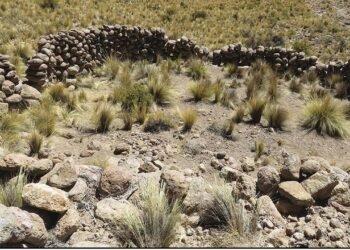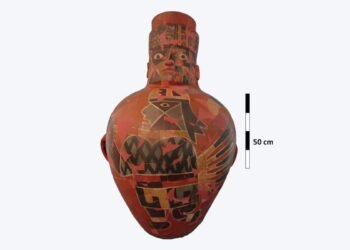The Wallacean islands, situated amidst the deep sea waters separating Asia and Oceania, have long been isolated from the surrounding regions. However, these tropical islands played a crucial role as a migration route for ancient peoples moving into the Pleistocene Australia-New Guinea landmass (known as Sahul), and they have been inhabited by modern human populations for over 47,000 years.

Recent archaeological findings reveal a significant cultural transformation across Wallacea around 3,500 years ago. This transformation is associated with the expansion of Austronesian-speaking farmers who intermingled with local hunter-gatherer populations. Genetic studies of modern-day populations have previously provided varying dates for this intermixing, ranging from 1,100 to nearly 5,000 years ago.
To gain deeper insights into this expansion and the resulting human interactions, an international research team conducted DNA analysis on 16 ancient individuals from different islands in Wallacea. This extensive genomic data from the region sheds new light on these historical developments.
“We found striking differences between regions in Wallacea and surprisingly, the ancestry of ancient individuals from the southern islands cannot be simply explained by admixture between Austronesian- and Papuan-related groups,” says Sandra Oliveira, one of the lead authors of the study.
The research team identified an additional ancestry contribution from Mainland Southeast Asia, with the closest resemblance to present-day Austroasiatic speakers. They propose that admixture initially occurred between Mainland Southeast Asian and Papuan-related ancestry groups, and gene flow from Austronesian-related groups followed at a later stage.
Peter Bellwood, an author of the study with extensive archaeological experience in Island Southeast Asia, remarks on the mystery surrounding the Mainland Southeast Asian component. He speculates that it may represent small groups, potentially early farmers, who traveled extensively and left minimal archaeological or linguistic traces along their path but grew in population size after arrival.
While the identity of the people responsible for spreading this ancestry remains unclear, the discovery of Mainland Southeast Asian ancestry in the southern Wallacean islands carries significant implications for understanding the Neolithic dispersals into Island Southeast Asia.
Toetik Koesbardiati, an anthropologist at the Universitas Airlangga in Indonesia and a co-author of the study, emphasizes the importance of this finding for archaeologists in the region. She suggests that further research will intensify efforts to study this migration using additional lines of evidence.
The study also reveals a closer genetic relationship between Austronesian-related ancestry in ancient individuals from northern Wallacea and the Pacific, compared to their counterparts in southern Wallacea. This pattern aligns with linguistic evidence. Moreover, it provides insights into the timing of genetic admixture between Asian and Papuan populations.
Mark Stoneking, a senior author of the study, notes that previous research based on present-day populations yielded diverse estimates regarding the timing of the Austronesian expansion. The ancient genomes now available show that admixture occurred in multiple phases or continuously for at least 3,000 years throughout Wallacea, a pattern that can be extended with the study of older genomes in the future.
Additionally, the research team investigated genetic similarities between the ancient Wallaceans and a previously studied pre-Neolithic individual from Sulawesi, another island in Wallacea. Their findings indicate that all individuals from Wallacea in this study are genetically more similar to present-day New Guinean groups than to the earlier local population. This suggests a stronger ancient connection between these regions than previously understood and confirms significant genetic replacement among Wallacean hunter-gatherer populations. — Max Planck Society
More information: Sandra Oliveira, (2022). Ancient genomes from the last three millennia support multiple human dispersals into Wallacea, Nature Ecology & Evolution. DOI: 10.1038/s41559-022-01775-2.





















